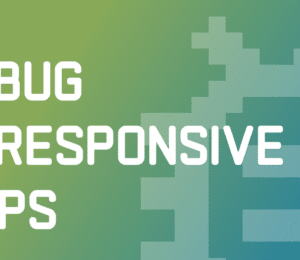Measuring Time and Duration in Kotlin
- February 25, 2022
- 4281 Unique Views
- 4 min read
TL;DR : The DurationAPI is coming out of its experimental stage and offers a nice DSL to easily work with time durations. If offers the obvious but also nice extra goodies, such as coercions and ISO/String conversions and is notably used to calculate processing time. You can directly run the code I present below in the Kotlin playground!
In this article, we'll be diving into one of the other news of the Kotlin 1.6 release : The DurationAPI coming out of Experimental and is available for all flavours of Kotlin (so JS as well 😊)! Let's look quickly together what it has to offer!
Why a Duration API?
There are already multiple ways to calculate time in Java, so why the need for a Kotlin variant?
From the proposal itself, The Duration API aims at helping to solve the representation of the interval between two moments in time. It aims to be able to represent very precise values (up to the Nanosecond), and is especially suited to calculated the execution time of a code block, for example.
Duration API: A Convenient DSL
The first, and nice thing of the duration API is that it provides a nice DSL to manipulate time durations, from nanoseconds up to days. No need to search for weeks, months or years.
Printing Durations also returns very human readable results (which is the point, so that's expected 🙂).
val tenDays: Duration = 10.days
val fiveNanoseconds = 5.nanoseconds
println(tenDays + fiveNanoseconds) // 10d 0h 0m 0.000000005s
// days, hours, minutes, seconds, nanoseconds are available
// val oneWeek = 1.week ⚠️Nope, won't work⚠️
Negative Durations & Infinite Durations: Completely OK!
The API handles negative values nicely, as well as (positive and negative) infinite values. ZERO is also a thing, and it comes with no rounding errors
val minusOneDay = (-1).days
println(2.hours - 3.days) // -(2d 22h)
println((2.hours - 3.days).absoluteValue) // 2d 22h
println(1.days - INFINITE) // -Infinity
println(ZERO) // 0s
Duration API: Many Conversion Functions
The API offers many conversion methods, from one Duration unit to another, but also into more common units like Long, or Double. The inWhole methods also allow for simple rounding of units for a better reader experience
println((12.hours + 30.minutes - 6.milliseconds).inWholeDays) // 0 println((12.hours + 30.minutes).toDouble(DurationUnit.DAYS)) // 0.5208333333333334
It is also possible to convert one Duration unit to another, though it is currently still behind an experimental flag.
@OptIn(ExperimentalTime::class)
fun experimentalConversion(){
val converted = convert(12.32, DurationUnit.DAYS, DurationUnit.MINUTES)
println(converted)
}
// 17740.8
Once thing I am confused about with this function though is the fact that is returns a Double, rather that the desired Duration output unit. To get DurationUnit.MINUTES back out my example you'd need to do it yourself : convert(12.32, DurationUnit.DAYS, DurationUnit.MINUTES).minutes
Easy Parsing In & Out of the String Realm
One of the things I didn't expect to find was a simple way to actually parse the String representation of Durations back into actual Duration values.
Parsing can be done with, or without Exception handling and null safety. We can appreciate the clarity of the error message in the invalid case (quite useful for a Functional Style of programming)
println(parseOrNull("11d 19h 18m")) // 11d 19h 18m (Duration)
println(parse("11w"))
Exception in thread "main" java.lang.IllegalArgumentException: Invalid duration string format: '11w'...
Caused by: java.lang.IllegalArgumentException: Unknown duration unit short name: w
The Duration API also provides functions to convert in and out of the ISO 8601 time format, which I didn't know existed. Similarly, that can be done in a safe or unsafe manner. The format even allows to encode INFINITY.
println((12.days + 5.hours + 18.minutes).toIsoString())
// PT293H18M
println(INFINITE.toIsoString()) // PT9999999999999H
println(parseIsoStringOrNull("PT283H18M")) // 11d 19h 18m
Comparing Durations and Enforcing Duration Intervals & Bounds
As expected, Durations can be compared which each other. But the library also offers several methods to enforce that values are within a certain range. In the case they are not, the default coercion value is returned. Have a look at coerceIn for example.
//Comparisons
println(12.milliseconds > 120.nanoseconds) //true
// Returns at maximum 1.2ms (1200 microseconds)
println(12.milliseconds.coerceAtMost(1200.microseconds))
// 1.2ms
// Returns at least 1.2ms
println(12.milliseconds.coerceAtLeast(1200.microseconds))
// 12ms
// Returns the value if it's in the range, one of the bounds otherwise
println(12.milliseconds.coerceIn(12.microseconds, 1200.microseconds))
// 1.2ms
// We can also easily create ranges of Durations, and use those as bounds
val bounds = 12.microseconds.rangeTo(1200.microseconds)
println(12.milliseconds.coerceIn(bounds))
Duration API: In the Wild
I've had a quick look at the current Kotlin stdlib, and haven't found many usages of the Duration API just yet. It does make sense, given that the use case is arguably specific.
It is visible in the measureTime class though, in the kotlin.time package and is used exactly for what the name suggest : calculate the precise execution time of specific code blocks. You can run it, though it's still behind a feature flag!
@OptIn(ExperimentalTime::class)
fun experimentalPrintDuration(){
val timeToPlop = measureTimedValue {
println("plop")
}
println(timeToPlop.duration)
}
// 950.667us
Conclusion
I really like that the Duration API focuses on a human readability as well as easy conversion and usage. It's also a very nice entry point into the stdlib if you're searching for simple contained to start with. I rarely dive into the standard library and the implementation is concise and easy to read. I'll surely be trying to find some uses for it in the short future :).
Hope you like what you read, I do write quite a bit about Kotlin so have a look at my other articles, or ping me on Twitter if you want to react to the article!
Don’t Forget to Share This Post!









Comments (0)
No comments yet. Be the first.